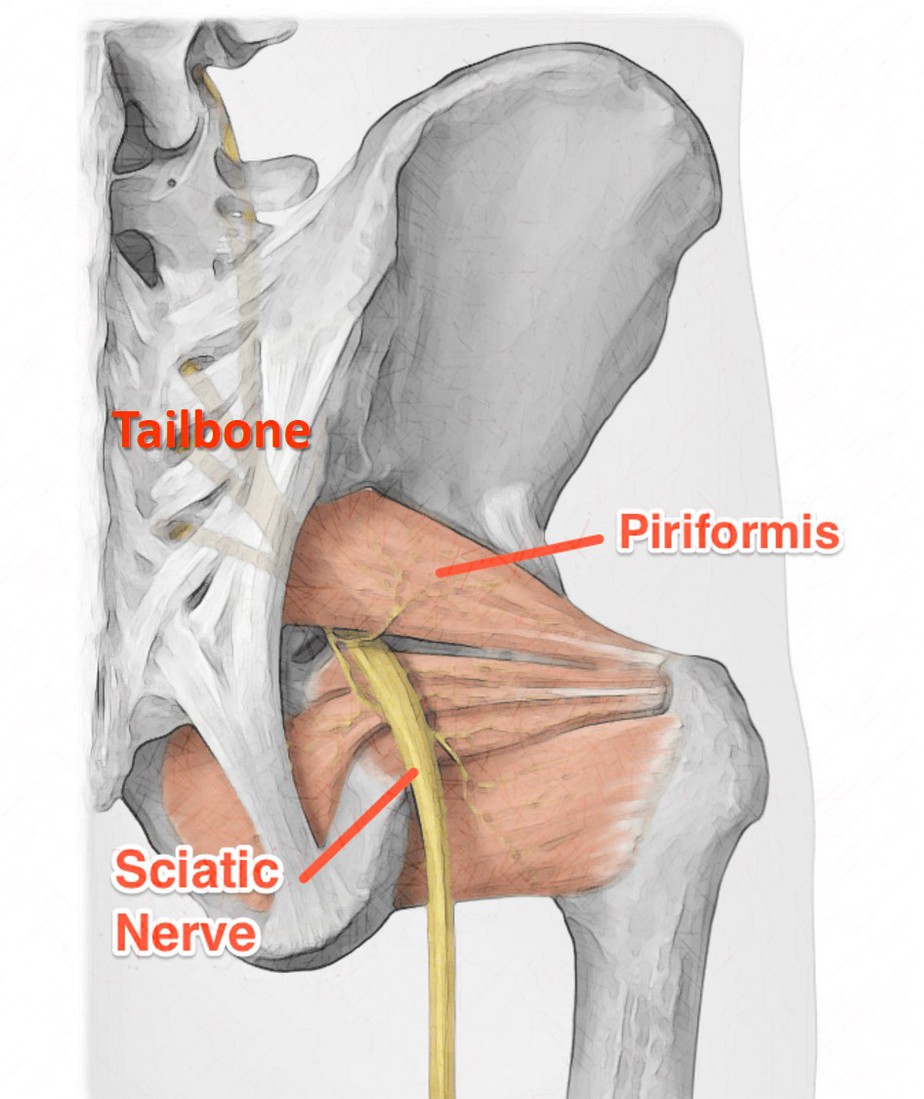Does your butt hurt? Has what you thought was a cramp in your butt muscle turned out to be a persistent pain that just won’t go away? While a tight piriformis muscle is often to blame, there is usually another reason this muscle is tight and hurting that typically goes undiagnosed. It could instability in your sacroiliac (SI) joint.
What Is the Piriformis Muscle?
The piriformis is a triangular-shaped muscle that attaches at the outside of the hip at the top of the femur (the upper-leg
However, the sciatic nerve isn’t the only thing that can cause the butt to hurt. In one study, only about one in four patients had evidence that the sciatic nerve was involved with piriformis muscle pain. Interestingly, it found that 86% of patients had either damage to the muscle’s tendon (tendinopathy) or an enlarged piriformis muscle.
So what could be causing this muscle damage? More often than not, it’s an unstable sacroiliac joint.
How the Sacroiliac Joint Can Irritate the Piriformis Muscle and Make Your Butt Hurt
The point at which the sacrum (the tailbone) and the iliac (the wing-shaped bone) connects on either side of the tailbone is called the sacroiliac (SI) joint. The SI joint is housed between the back of the pelvic bone and the tailbone. There are muscles and numerous ligaments that help stabilize the SI joint. One of those muscles is the piriformis muscle and its connecting ligaments. If these ligaments become loose, the piriformis muscle will take on the extra load, working overtime to try to stabilize the sacrum (the tailbone). In turn, the piriformis muscle can enlarge and become chronically tight.
Ways to Treat the Piriformis Muscle
Treatment suggestions are very different depending on whether you are seeing a traditional orthopedic physician or an interventional orthopedic physician. Most traditional physicians are likely going to suggest a treatment directed at the piriformis muscle, but if the SI joint is the culprit, the relief to the muscle will only be temporary, so it’s best to treat the source to begin with.
Stretching a tight piriformis muscle may provide some initial relief. There are many helpful stretches for this muscle, but one really good one is to lie on your back with your knees bent. Cross your foot that is on the same side as the tight piriformis muscle over your opposite knee. Hook your hands under the opposite knee and pull both legs toward your chest. You should feel a good stretch in the tight muscle. If stretches, time, and other conservative measures fail to stop the pain, more will need to be done.
A traditional orthopedic physician may recommend treating the muscle with steroid injections or shockwave therapy. Botox may also be recommended to relax a tight piriformis. But all of these therapies are temporary and come with side effects, and if the source of your tight and painful piriformis muscle is actually your SI joint, these might mask the pain for a while, but they aren’t a long-term solution. If these all fail, surgery may be recommended which involves cutting the muscle. This, too, like any highly invasive surgery, can have some serious side effects.
Another piriformis injection option is platelet-rich plasma (PRP). The growth factors in the PRP, when injected with advanced image guidance, can be helpful at healing damaged muscle and tendons if these are the source of the problem. If, however, the problem really is the SI joint (and it is more often than not), even PRP injections in the muscle and tendon won’t provide a solution if the joint isn’t also addressed.
Treating a Tight Piriformis Due to an Unstable SI Joint
The take-away here is, why treat the muscle if the piriformis pain and tightness is actually due SI joint instability? You have to treat the joint! How? Again, steroid injections may be an option; however, despite their popularity in traditional medicine, they are riddled with side effects and they can only temporarily, if that, relieve pain.
Prolotherapy and orthobiologic injections are another option for treating SI joint instability. Prolotherapy, which involves creating a brief inflammatory reaction, and orthobiologic injections, such as PRP or stem cells precisely injected under fluoroscopy or ultrasound guidance into the ligaments that stabilize the SI joint, should tighten up those ligaments.
Getting the SI joint ligaments back to work takes the extra load off the piriformis muscle…and, as a result, should eliminate what’s making your butt hurt.
